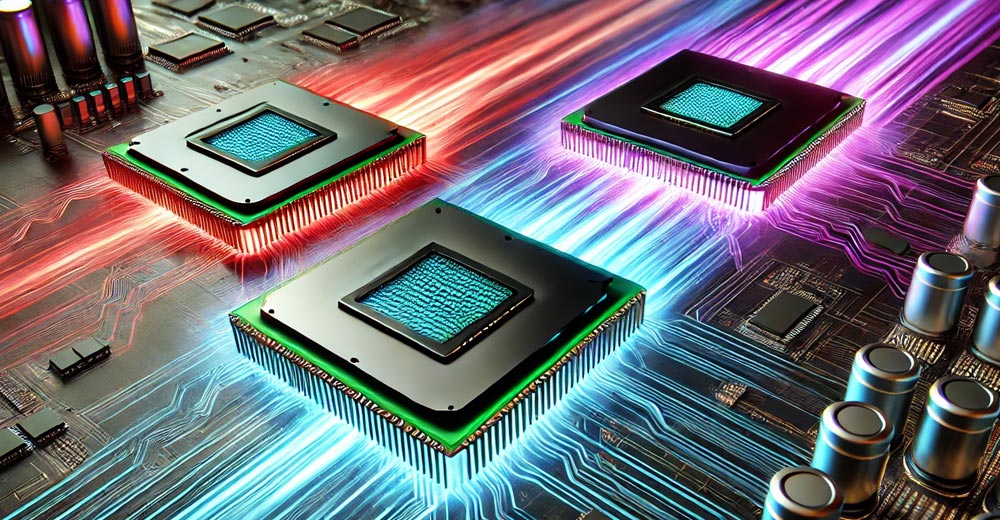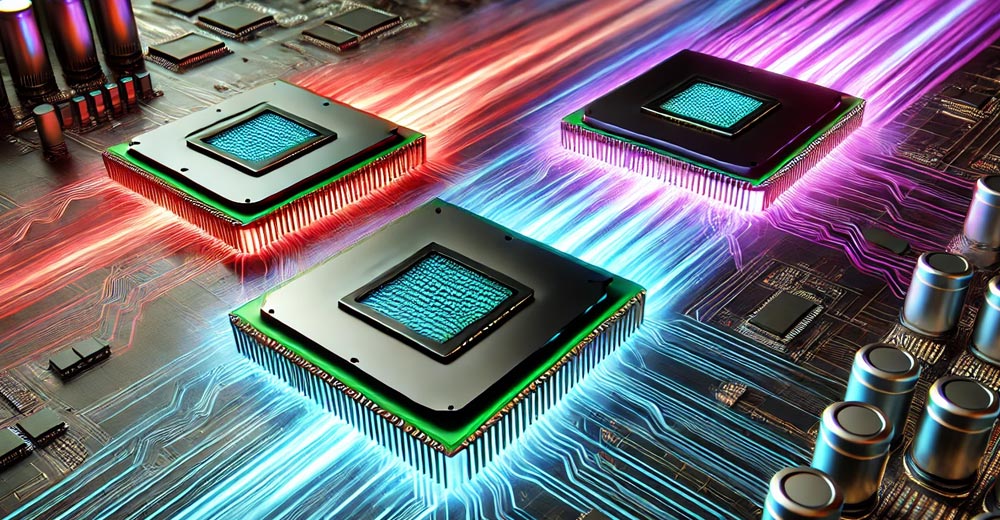Proven strategies to scale your company, grow market share, and win more customers.he free playbook today.
The news around artificial intelligence (AI) has reached a fever pitch. However, this isn’t just about algorithms and data; we stand at a precipice in personal hardware, eerily similar to the moments that gave birth to the personal computer and the modern smartphone.
The tectonic plates of technology are shifting, and the established giants of today — think of Intel in the early PC era or Nokia before the iPhone — could find themselves struggling to adapt in a world fundamentally reshaped by AI.
Let’s talk about the hardware revolution brewing beneath AI’s rise and the existential risks it poses to today’s chipmaking giants. We’ll close with my Product of the Week: the HP OmniBook X Flip Next Gen AI 16, which could make your current laptop look like a typewriter.

Tech Revolutions: From PCs to Smartphones
The early days of personal computing were defined by a fragmented landscape. Then came Apple, which democratized computing with the Macintosh, much like it would later do with music players via the iPod. Yet Apple, for all its visionary beginnings, lost the lead in PCs and almost went under before Steve Jobs’ return and the iPod’s salvific launch. Talk about cutting it close!
Fast forward to the smartphone revolution.
Surprisingly, IBM created the first smartphone, named “Simon,” in 1994. Yet IBM never truly capitalized on this invention and was largely absent from the market by the end of the decade. I guess IBM was too busy teaching computers how to play chess to notice phones were about to become mini-computers.
Enter Apple again, late to the game with the iPhone, but with a laser focus on the consumer experience. It standardized the market around a touch-centric, app-driven model, effectively crippling Nokia, eliminating Palm and BlackBerry, and sidelining Microsoft’s early mobile ambitions. Apple didn’t just enter the market; it redefined it, leaving competitors wondering if they’d brought a flip phone to a smartphone fight.
AI Disruption and the Open-Source Surge
Now, AI stands poised to trigger a similar upheaval in personal hardware. We’re seeing the emergence of new processor companies like, staffed by ex-Intel engineers and reminiscent of Intel’s scrappy beginnings.
Crucially, there’s a massive focus on open source in the AI development community — for frameworks, models, and, increasingly, hardware architectures like RISC-V. It’s as if everyone decided to share their secret sauce recipe online.
This emphasis on openness presents a significant challenge to the current leader in AI GPUs, Nvidia, which isn’t known for its open-source embrace. In stark contrast, AMD has wholeheartedly with its ROCm platform and commitment to open standards in AI.
If AMD can strategically pivot to an open-source hardware platform, much like it did with its AI-focused products and ROCm, it has a genuine shot at displacing Nvidia, echoing the PC era where open architectures eventually triumphed over proprietary ones for broader adoption. Think of it as the ultimate group project in which everyone actually pulls their weight.
Are Chip Giants Repeating Tech History?
However, history rarely repeats itself verbatim, and the established players — AMD, Intel, and Nvidia — might be repeating a familiar mistake: underestimating the disruptive potential of this shift.
Just as PC OEMs initially scoffed at the Macintosh’s limitations and established phone manufacturers dismissed the iPhone’s radical touch interface, these processor firms and their OEM partners may not fully grasp the implications of AI-native hardware and the power of open-source collaboration. It’s like bringing a very fancy abacus to a quantum computing conference.
Consider Microsoft’s acquisition of Danger, the maker of the Sidekick, a device that showed significant potential to be an early iPhone competitor. Instead of nurturing Danger’s innovative spirit and consumer focus, Microsoft integrated it into its existing enterprise-centric structure, effectively stifling its potential.
Tellingly, key members of Danger’s leadership eventually landed at Google, where they played a pivotal role in the creation of Android, a truly open and powerful competitor to Apple’s iOS — illustrating how established players can inadvertently pave the way for disruption by mishandling nascent technologies and talent.
AI-Native Hardware and Open Innovation
So, what’s likely to come next? We’re likely to see a fragmentation of the personal hardware landscape driven by the specific demands of AI workloads. We’ll see more specialized processors designed for tasks like neural network inference and training, potentially optimized for energy efficiency and specific AI frameworks.
Companies embracing open hardware standards, such as RISC-V, coupled with thriving open-source software ecosystems, are well-positioned to capitalize on this trend. Much like the open architecture of the IBM PC allowed for rapid innovation and a vast ecosystem of compatible hardware and software, these companies are poised to benefit from this trend.
The merger of OpenAI and Jony Ive’s IO signals a potential leap beyond incremental hardware improvements toward fundamentally new AI-centric devices. These could be interfaces and form factors we haven’t even conceived of yet, potentially rendering current assumptions about computing hardware obsolete. Imagine your next “computer” being a chic, minimalist pebble that just.
Chipmakers Must Disrupt Themselves Now
To avoid the fate of Nokia or IBM’s PC division, AMD, Intel, and Nvidia must take the threat of full displacement far more seriously. They need to:
- Establish truly autonomous divisions focused on radical, AI-native hardware architectures and open-source software development, insulated from the constraints of their core businesses. Think of them as secret labs where mad scientists (of the good kind) concoct the future.
- Actively invest in and contribute to open hardware initiatives like RISC-V to foster a broader ecosystem that isn’t tied to proprietary technologies. Sharing is caring, even with competitors.
- Form strategic partnerships with AI software leaders and innovative startups rather than viewing them solely as customers. Embrace the weird and wonderful!
- Explore entirely new computing paradigms that move beyond the traditional CPU/GPU-centric model, anticipating the potential for AI to reshape how we interact with technology.
Wrapping Up: Navigating the AI Inflection Point
The AI revolution presents an existential challenge to the semiconductor industry’s established order. While AMD, Intel, and Nvidia all possess immense talent and resources, their traditional business models and proprietary leanings could become liabilities in a landscape increasingly defined by open-source collaboration, custom silicon, and radical new hardware concepts.
History is replete with examples of industry leaders who failed to adapt to seismic technological shifts. To avoid becoming cautionary tales, these giants must shed their corporate inertia, embrace a more agile experimental approach, and perhaps even collaborate in unconventional ways to build the truly open, AI-native computing future that is rapidly taking shape.

